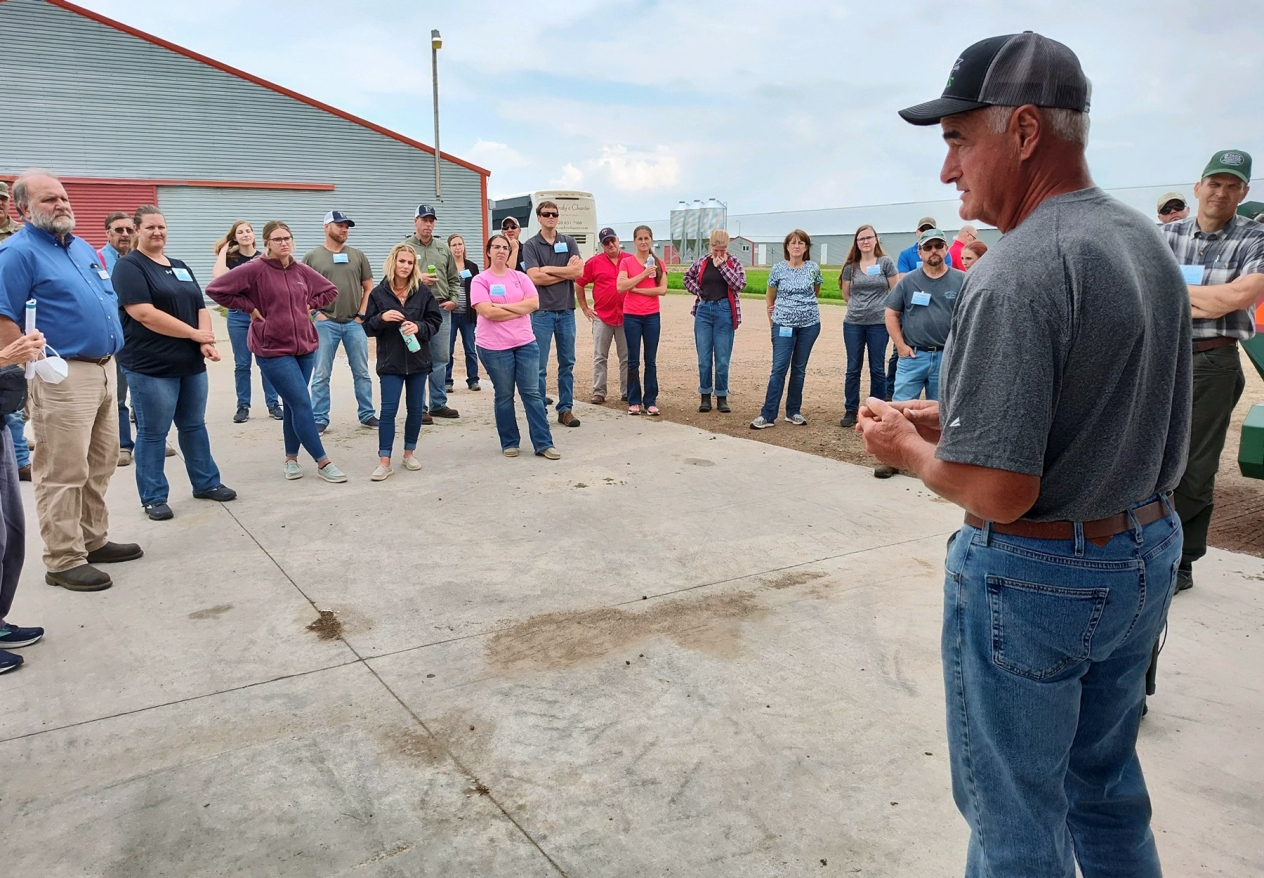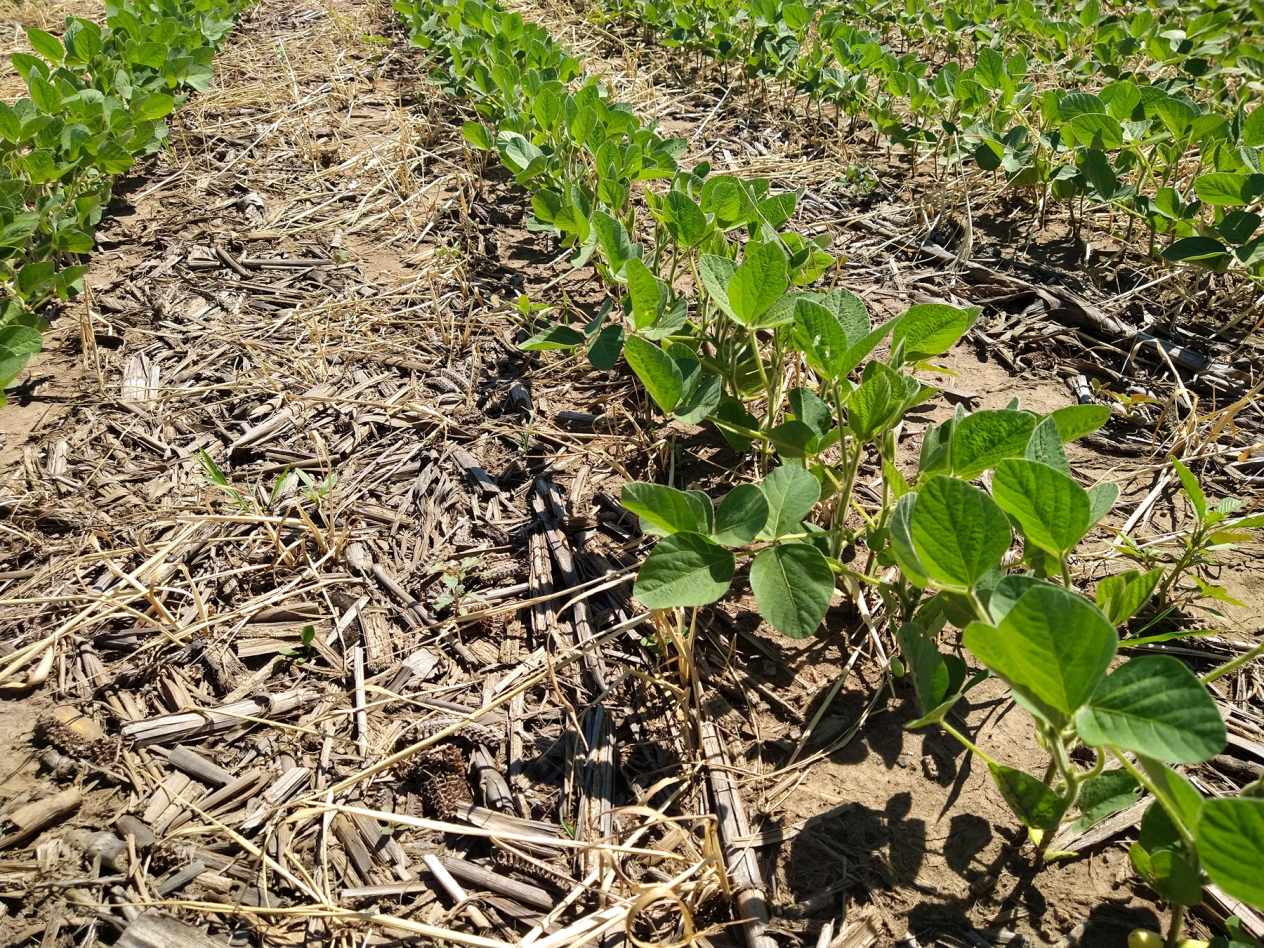For nearly a century, Don Tschida and his family have grown crops and raised cattle on their central Minnesota farm. As they near that milestone, Tschida finds himself reflecting on his role as custodian for the land.
“I’ve been thinking about the idea of leaving it for the next generation and how important it is to take care of the land and resources,” Tschida says. “We’re so blessed with the farm we have.”

A river runs through the Tschida farm in Agram Township in Morrison County. To protect the river — and the land in general — Tschida and his family have implemented a variety of conservation practices that protect water:
- Cover crops improve soil health and its capacity for holding water.
- Buffer zones — designated areas for grasses and trees — protect waters from agricultural runoff.
- Rotational grazing maintains soil cover, helps nutrients absorb into the ground, and builds healthy soils that are more resilient to extreme weather conditions.
- The use of soil moisture probes helps Tschida know how much water his crops need, cutting down on his water use.
Tschida and his family are also enrolled in the Minnesota Agricultural Water Quality Certification Program, a unique opportunity for farmers to take the lead in implementing conservation practices that protect our state’s lakes, rivers, and streams.

Both the abundance of water in central Minnesota and the droughts Tschida has experienced firsthand remind him that water is a finite resource. For Tschida and his family, taking steps to conserve land and water is a no-brainer. “If we’re lucky enough to have it, then we just have a responsibility to take care of it,” he says.
Learn more in the We Are Water MN exhibit
Tschida shares his story as a part of We Are Water MN, a traveling exhibit and community engagement program that explores Minnesotans’ relationships with water. The exhibit will next focus on the Mississippi River – Sartell Watershed.
Nestled in the Upper Mississippi River Basin, this large watershed boasts diverse water resources that offer recreational opportunities and economic benefits to residents and visitors alike. Spanning 879 total river miles and 232 lakes, land use in the watershed is primarily agricultural, with much of that land highly irrigated. Other land uses include forest, wetland, and urban development. While challenges exist, many of the communities here have made progress on pollution and water supply problems in the watershed.
To hear local stories and learn more about water in this watershed, visit the exhibit from April 25 through June 17 at Art in Motion on the Lake Wobegon Trail at 1400 4th Street in Holdingford. Find exhibit and event details on the Stearns County Soil and Water Conservation District website.
You can also hear more from Don’s interview, including a more in-depth look at his family’s conservation practices, on The Watershed podcast.
About We Are Water MN
We are Water MN is led by the Minnesota Humanities Center in partnership with the Minnesota Pollution Control Agency; the Minnesota Historical Society; the Board of Water and Soil Resources; the Minnesota Departments of Agriculture, Health, and Natural Resources; and University of Minnesota Extension.
The program is funded in part with money from the Clean Water, Land & Legacy Fund — which was created with the vote of the people of Minnesota on Nov. 4, 2008 — and by the National Endowment for the Humanities.